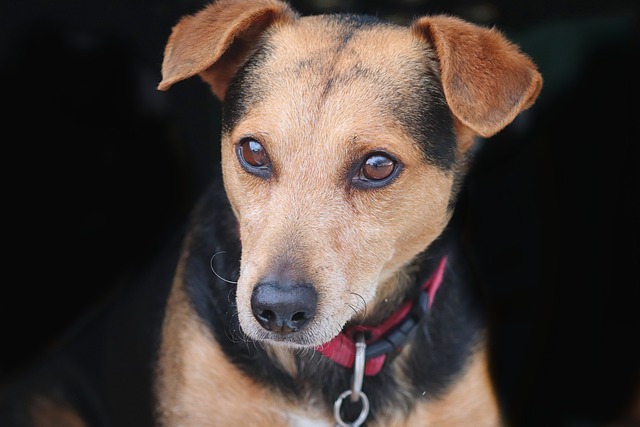
How do I know if my Poodle is cold?
As pet owners, we always hope to be able to feel the needs of our dogs at all times. When the Poodle at home is shivering, the worry is self-evident.
On a hot summer day, the scorching sun shines unreservedly on the earth, and every inch of the air is filled with heat. While we are enjoying the coolness in the air-conditioned room, the lively and cute dogs at home may be facing the risk of heat stroke. Dogs cannot express their physical discomfort in words, which requires us to observe carefully and detect signs of heat stroke in time to protect their health.
The normal body temperature of dogs ranges from 37.5℃ to 38.5℃. When the external environment temperature is too high or the dog has difficulty in heat dissipation after strenuous exercise, the body temperature may rise rapidly, causing heat stroke. Heat stroke not only makes dogs feel uncomfortable, but in severe cases it can even endanger their lives. Therefore, it is crucial for every dog owner to know how to judge whether a dog has heat stroke.
Abnormal breathing is one of the most obvious symptoms of heat stroke in dogs. Under normal circumstances, dogs breathe steadily and at a moderate frequency. But when dogs have heatstroke, in order to dissipate heat, they will expel the heat in their bodies by speeding up their breathing. Their breathing becomes rapid and shallow, and they may even have difficulty breathing, which makes them look like they can't breathe. Some dogs will also open their mouths wide and stick out their tongues. Their saliva secretion increases significantly, and their saliva keeps dripping. Seeing the dogs breathing with difficulty, our hearts will also tighten.
In addition to abnormal breathing, the dog's behavior will also change. The originally lively and active dog will suddenly become listless and lose interest in the things around him. He will no longer chase toys or pester his owner to play as usual, but lie quietly on the ground and refuse to move. Some dogs will also be irritable and restless, pacing and barking constantly, as if to convey physical discomfort to us. If the dog has symptoms such as vomiting and diarrhea, it is even more important to be vigilant, as this may be gastrointestinal discomfort caused by heatstroke.
 When a dog has heatstroke, other parts of the body will also show obvious changes. We can touch the dog's foot pads. Under normal circumstances, the dog's foot pads are warm and moist, but when it has heatstroke, the foot pads will become hot and dry. The ears will also be hotter than usual, even a little hot to the touch. The color of the dog's gums will also change, from normal pink to bright red, and in severe cases, cyanosis may occur. These physical changes are all distress signals sent by dogs to us.
When a dog has heatstroke, other parts of the body will also show obvious changes. We can touch the dog's foot pads. Under normal circumstances, the dog's foot pads are warm and moist, but when it has heatstroke, the foot pads will become hot and dry. The ears will also be hotter than usual, even a little hot to the touch. The color of the dog's gums will also change, from normal pink to bright red, and in severe cases, cyanosis may occur. These physical changes are all distress signals sent by dogs to us.
The manifestations of heatstroke may vary in different breeds of dogs. Short-nosed dog breeds, such as bulldogs and pugs, are more likely to suffer from heatstroke due to their short nasal cavities, relatively difficult breathing, and poor heat dissipation ability. When they suffer from heatstroke, the symptoms of shortness of breath will be more obvious, and there may even be a risk of suffocation. For long-haired dog breeds, the thick hair is like a layer of insulation, which hinders the dissipation of heat, and they may be more likely to have a high body temperature after heatstroke.
When we find signs of heatstroke in dogs, we must not panic, and we must take immediate measures to cool the dog down. First, move the dog to a cool, ventilated place and avoid direct sunlight. You can wipe the dog's body with a wet towel, especially the paw pads, ears, abdomen and other parts, to remove heat through the evaporation of water. You can also give your dog some cool drinking water, but be careful not to let the dog drink too much at one time to avoid vomiting. If the dog has more serious symptoms of heat stroke, such as coma, convulsions, etc., it should be taken to a pet hospital for emergency treatment immediately.
In daily life, it is equally important to prevent dogs from heat stroke. Avoid taking your dog out during high temperature periods, especially when the sun is strongest at noon and in the afternoon. If you must go out, choose early morning or evening when the temperature is lower, and carry drinking water with you to replenish water for your dog in time. Provide a cool and comfortable living environment for your dog, keep the room ventilated, and use air conditioning or fans to adjust the temperature when necessary. Comb your dog's hair regularly to help them dissipate heat. For long-haired dog breeds, you can trim their hair appropriately.
Dogs are the most loyal companions in our lives. They give us endless companionship and joy. In the hot summer, we should pay more attention to their health, and use love and care to build a line of defense against heat stroke for them. When we see dogs playing happily in the cool, our hearts will also be filled with comfort and joy.

As pet owners, we always hope to be able to feel the needs of our dogs at all times. When the Poodle at home is shivering, the worry is self-evident.

When a dog has bronchitis, the violent coughs seem to be telling the owner about the discomfort. Seeing their shortness of breath and listlessness, the owner's heart is also in a knot.

When we find that dogs frequently scratch and bite their own skin, causing their originally smooth fur to become messy and even leaving scratch marks on the skin,

Watching the dog frequently assuming the defecation posture, its little face turning red from strain, yet being unable to defecate,

When a furry dog looks at you with wet eyes, but exudes an unpleasant smell and has tangled hair, many owners may hesitate: will not bathing really have a big impact?

When you find that your dog is getting thinner and thinner, has a poor appetite, or sees white wriggling worms in the feces, your inner worry and heartache will surge instantly.